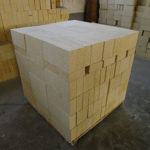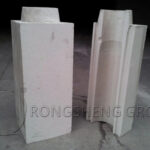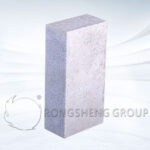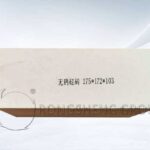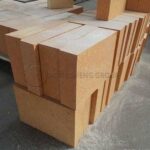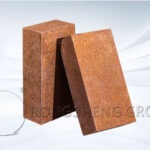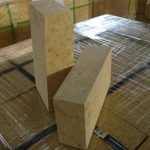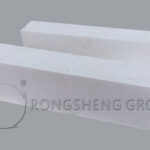Ceramic welding repair is a very effective method for the middle and later maintenance of glass tank furnaces. It can also be applied to other industrial furnaces. In foreign countries, ceramic welding repair technology has been widely used in the hot repair of glass kilns and coke ovens without interrupting production. For manufacturers, the benefits of extending a kiln’s production cycle are considerable. The cost of ceramic welding repair to extend the production cycle is negligible, which is why this technology has emerged in China in recent years.
Overview of Ceramic Welding Repair Technology
Welding technologies such as electric welding, gas welding, engineering plastic welding, etc. are all technologies that use electric energy or thermal energy to melt the solder and the workpiece to be welded together. Ceramic welding repair technology is also a welding technology like electric welding and gas welding, but it is a special welding technology. It uses a mixture of powdered refractory materials and powdered metal combustibles as solder and uses oxygen as a carrier to transport the solder to the repair area through a welding gun. A violent oxidative exothermic reaction occurs between the metal and oxygen in the hot atmosphere of the area to be repaired in the kiln. The solder is melted to produce a ceramic-like bond that is deposited onto the repair area of the base refractory material until the required thickness is reached. It is a method of repairing refractory materials in industrial kilns.
Since this technology utilizes the exothermic reaction of oxidation between metal and oxygen, it is different from the general hydrocarbon combustion mechanism. It uses metal powder as a combustible material and oxygen as a combustion accelerant. The high temperature of the area to be repaired causes the metal powder to burn and cause a thermal reaction. In addition, in order to prevent flammable materials from deflagrating in the welding gun, a small amount of nitrogen is added.
The Composition of Welding Filler Material
A glass kiln is composed of a variety of refractory materials, such as silica bricks, AZS bricks, magnesia bricks, corundum bricks, refractory clay bricks, etc. According to the welding mechanism, the composition of the welding filler material should be the same or similar to that of the base metal. Therefore, when selecting glass furnace welding repair materials, welding repair materials should be selected that have the same or similar matrix composition as the refractory material of the glass furnace welding repair part. Now some ceramic welding repair technology engineering companies have developed siliceous, zirconium, magnesium, and high-aluminum welding repair materials that can be used to repair silica bricks, AZS bricks, magnesia bricks, and corundum bricks. The following takes silicon solder filler as an example to analyze the composition of the solder.
Siliceous welding patch material is also an unshaped refractory gunning material, which is composed of dense refractory aggregate and binder with certain particle gradation. The aggregate is made of high-purity SiO2 containing tridymite and cristobalite as the main raw material, and its content accounts for more than 85% of the total welding filler material. In addition, the welding patch also contains the following ingredients: 6% Al2O3, 2% Fe2O3, 1%-2.5% CaO, 0.1% Na2O, 0.4%-1% K2O. The added binding agent adopts common inorganic salts such as silicate, phosphate, polyphosphate, and so on. The content of solid metal powder (such as aluminum) is between 2% and 4%. The characteristics of this welding patch material are dense structure and strong earthquake resistance. The heat released after the violent oxidation reaction between metal powder and oxygen (the temperature reaches more than 2000°C) causes it to melt rapidly. It is firmly bonded with the silica brick (base material) to form an overall dense structure with stable volume, and will not damage the repair structure due to swelling and cracking due to the transformation of the SiO2 crystal form.
The Composition and Technical Advantages of Ceramic Welding Repair Equipment
The welding repair equipment mainly consists of a welding gun, a mixer, an operation control panel, a cooling water pressure pump, and a high-pressure rubber pipe. Auxiliary equipment includes a leveling machine, refractory cutting saw, small hydraulic station, cooling equipment, etc. Working conditions requirements: pure oxygen above 0.4MPa, nitrogen 0.02MPa, water pressure 1MPa.
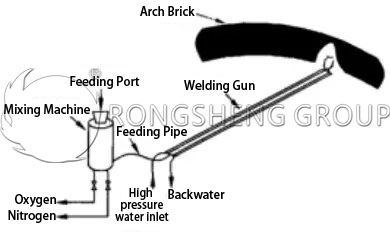
Using Ceramic Welding Repair Technology Has the Following Advantages:
- ① Using a special spray gun, it can reach parts that cannot be reached by traditional hot repair, such as corners inside the kiln.
- ② The impact on production during maintenance is very small and can sometimes be ignored.
- ③ The labor intensity and risk of maintenance personnel are greatly reduced.
- ④ Ceramic welding repair can be used to repair the weak parts of the kiln when problems first arise to eliminate safety hazards.
Welding Repair Operations and Control of Process Parameters
Ceramic welding repair technology is a maintenance method that has emerged in China in recent years to repair kilns without stopping production in a hot state. It has been widely used abroad. Foreign engineering experts have developed a set of mature operating methods and processes during the operation, which are operated by experienced engineering and technical personnel during actual construction. The control of the operating process parameters is particularly precise, and personnel have a clear division of labor and perform their respective duties. Depending on the welding repair part and the composition of the solder, the mixer feeds the material at a certain speed to ensure the quality of the weld.
In this process, oxygen acts both as a combustion accelerant and as a carrier for transporting solder. Whether the pressure and flow are stable will directly affect the welding quality and efficiency. If the pressure is too high the flow rate of the welding repair material is too fast and it is difficult to completely melt, slagging and pores will be formed in the welding repair area, the bonding strength with the base metal is insufficient, and the quality of the welding repair is poor. If the pressure is too low, the flow rate of the welding repair material is too slow, and although the quality of the welding repair area is guaranteed, the efficiency is low. When repairing siliceous drums, the pure oxygen pressure is generally stable at 0.4MPa and the nitrogen pressure is stable at 0.02MPa. In this state, the welding speed can reach 30-50 Kg/h. Of course, the process parameters can be adjusted at any time according to the different welding repair parts and the composition of the welding repair material.
Welding Repair Effect
In 2002, large or small molten holes (also called rat holes) appeared on the tops of furnaces #1 and #2 of an electronic glass company, seriously affecting the safety of the furnaces. The ceramic welding repair technology of a foreign company was used for repairs and was successful. Figures 2 and 3 are photos of the corner welding on the right side of furnace #2 before and after. Comparing the two photos, it is obvious that the eroded molten holes and large-area eroded areas were smoothed by spraying after welding repair so that the structural strength of the large pile was greatly improved. After ceramic welding repair and maintenance, the company’s No. 1 furnace has been running for 7 years and 8 months, and the No. 2 furnace has been running for 8 years and 1 month. The furnace age has been extended by 1 to 2 years. Ceramic welding repairs became a key factor in extending the life of the pool furnace, bringing significant economic benefits to the company.
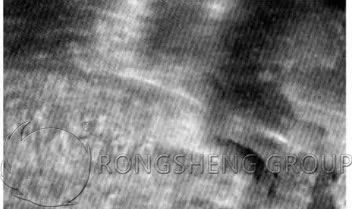
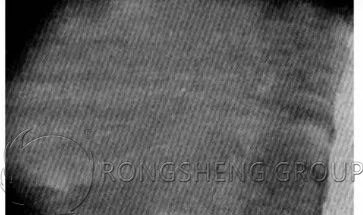
RS Refractory Bricks Manufacturer
RS Refractory Brick Manufacturer is a manufacturer and seller of refractory materials that specializes in providing refractory services for high-temperature industrial furnaces. Our refractory material manufacturer can customize refractory material solutions for high-temperature industrial furnaces, providing refractory products, refractory lining construction, and complete after-sales services. To buy high-quality refractory products, such as silica bricks, high alumina bricks, corundum bricks, carbon bricks, magnesia bricks, chrome bricks, and other refractory materials, please contact us. We will provide you with solutions based on your specific construction needs.

